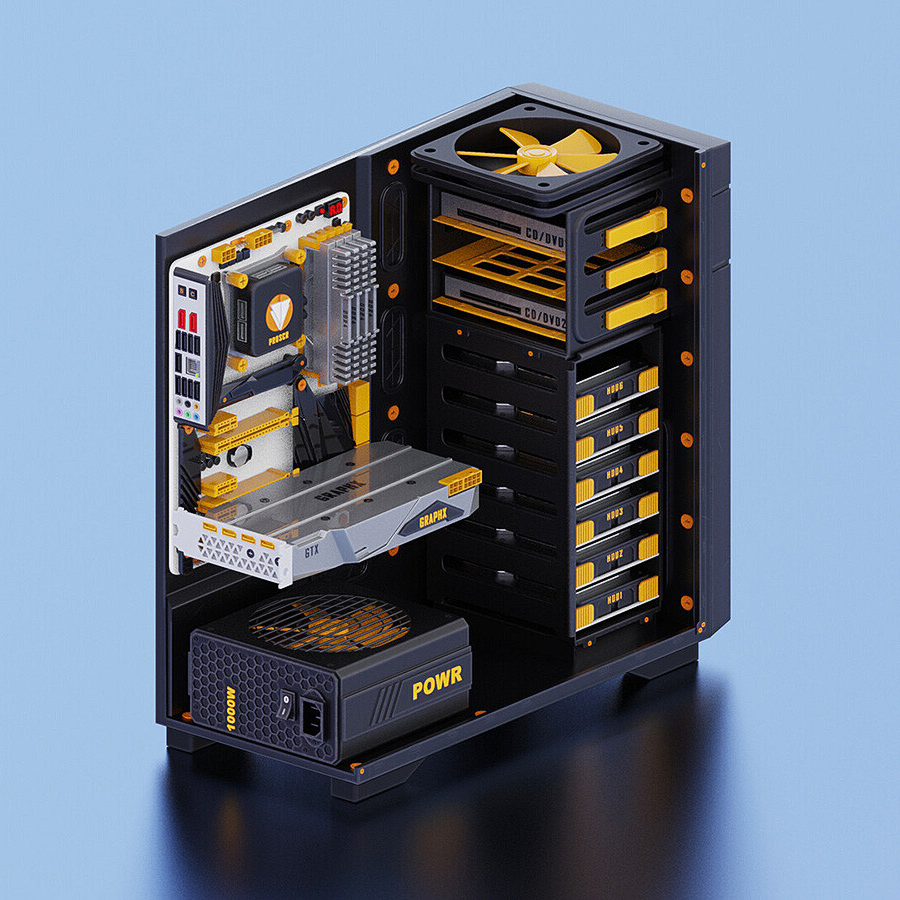

Stupid Differently. Apple’s new slogan.


Stupid Differently. Apple’s new slogan.


!buildapc@lemmy.world is a more active community.


NetSpot and InSSIDer are often recommended. I also noticed that Apple’s AirPort Utility (iOS) can show channels and signal strength of nearby networks. You need to turn on a setting in the Settings app to enable that feature. But it doesn’t have a clear UI that would help you to figure out the best channels.
Wi-Fi extenders are usually worthless. If you want to extend your network you should use mesh network.
Another thing that helps with interference is lowering the channel width. Using wider channels gives better throughput but there will be more interference. If you don’t transfer much data between your devices wirelessly and you don’t have some crazy fast internet connection, setting the channel width to the lowest for both bands is the safest option.


Another good network troubleshooting step is to simply restart the router by unplugging the power cable for 30 or so seconds. It can fix many network related issues with little to no effort and is good practice for security reasons as well. (Restarting the router will effectively close any malware running in router and as long as the router doesn’t start them again after restart, you’ll be safe until your router is again compromised.)
Have you recently moved the router to new location or moved objects around the router? Check the router’s environment for any metal objects. They can cause significant interference. And then there are dead spots. Regardless where inside a building you place Wi-Fi access point, somewhere within its range there is most likely at least one spot where the signal cancels itself.
If the router’s location or “gaming location” has not changed, the reason most likely is that the channel used by the router has become congested. For both 2.4GHz and 5GHz there are recommended channels one should use, and you should choose the one that is least used around you. There are no tools for iOS devices that can help with that because Apple has locked down the required functionality, so use either computer or Android. EDIT: Apple’s AirPort Utility has this functionality after you enable it in Settings app.
5GHz is better for gaming due to better latency. But if you can’t play close enough to the router, 2.4GHz might provide more stable connection.


Battery water is quite readily available everywhere and it’s cheap.


Alan Wake’s American Nightmare. Just finished the story mode. It’s Steam Deck Verified, so it runs and plays well, and it’s easy to play with a controller because it has a bit of auto-aim/aim correction.
I did enjoy it. Not a must play by any means, but it does add to the lore of the Alan Wake series. If you are a fan of that game series, I recommend playing this. And if you aren’t, you probably should play the other games in the series. 😉


This is a Bluetooth issue, not Linux or Deck specific. When microphone is enabled on a headset, Bluetooth will switch to a different audio codec. That codec supports one output channel (microphone) and one input channel, so it will be mono audio. The sound quality is good enough for audio calls but not for anything else. The only thing you can do is to disable the microphone. Or, you can do what people have done for couple decades now: complain at Bluetooth Special Interest Group until they improve the standard.
Peerless Assassin isn’t much more expensive. I have it on my Ryzen 5700x, and it’s never audible. At idle my PC is pretty much silent and while playing games GPU and case fans hides any noise the PA makes.


This is a good point. Black PSU and motherboard might stand out too much in that light, white-ish case.


I agree with this. Could easily save $200 buying some older and lower spec components. CPU choice is probably because of the iGPU, but there are other cheaper CPUs with iGPU. I don’t think the use case is going to require more computing power in the future, so I don’t know if future proofing is really necessary. If the use case changes some few years from now, you need to buy new components regardless of your choices today. Save some money now and put it towards a future upgrade.
16GB DDR4 is enough. That’s about $40 off. SSD is pointlessly big for the use case. 250GB might be enough, but even 512GB would be a bit cheaper.
CPU could be downgraded to something a couple generations older. Motherboard can also be downgraded, unless that one has some important features. That saves at least $150 total.
PSU is a complicated question. Cheaper would be enough, but you might lose money over time in your electricity bill. That’s kind of difficult to calculate.
Depending on your needs, virtual machine might be the easiest solution.


From Remedy’s business review JANUARY–MARCH 2024
Codename Condor, a part of the Control franchise, moved to full production meaning it has reached the final development stage before a game is launched. Based on wide internal playtests, we can see that the core loop is engaging, and the game brings a unique Remedy angle to the genre.
Control 2 team has focused on finalizing the proof-of-concept stage, in which the game world, game mechanics and visual targets are proven. We expect the project to advance to the production readiness stage during the second quarter of 2024.
Max Payne 1&2 remake continued in the production readiness stage. The game is expected to move into full production during the second quarter of 2024.
Codename Kestrel continued in the concept stage. The team works to refine the game concept.


Hopefully! It can’t come soon enough… unless they rush it, I suppose. But that’s usually not Remedy’s style.
Fan Control is great. Like you mentioned, the possibility to create mix fan curves is really helpful. For example, if either CPU or GPU gets hot, you can set all the case fans to ramp up. There are good guide videos on YouTube that shows how to set it up.
Have you tried to connect it to the MoBo then? If nothing appears on the display even then, the problem is somewhere else than your GPU.
Also, does the display have more than one input? Have you chosen the correct one from the display?


For some reason, when a GBA game crashes, the GBA will output the content of the game cartridge as audio over the headphone jack. This person noticed it and created a script that can re-create the ROM file (content of the cartridge) from the audio that the GBA outputs.


I think it’s simply a question of what are Google’s interests. Users doesn’t pay anything to Google for the service, so that’s not where Google’s interests are. Advertisers pay Google, so that’s where Google’s interests are. Google has no interests to make the search better for users, they want to make it better for advertisers.


I think it would be enough if other search providers would be required to give a portion of their profit from each search to Google.


Resolution matters a lot. If you have one of those super ultrawide monitors (5120x1440) or 4k monitor, even the best GPU available today struggles with some of the current games. What the performance will be with games released 7 years from now is anyone’s guess, but “good” is not the first word that comes to my mind.
Also when choosing your GPU, if silence is a factor that matters to you, a general rule of thumb is that the thicker/bigger the heatsink is the less noise the fans needs to make.
Channel width is a router setting so it affects everyone who connects to that router. With 40 MHz channel width the maximum connection speed of 5 GHz network is between 150 and 300 Mbps, depending on which Wi-Fi version the router and devices support. If your internet connection happens to be 100 Mbps, it wouldn’t benefit having a faster Wi-Fi connection. Except that the connection quality affects the connection speed, so that 150 Mbps might be less than 100 Mbps if the device is far from the router or the connection is bad for some other reason. The connection speed is important only when downloading or uploading big files. For typical web browsing, video streaming and gaming the connection speed of few tens of Mbps is sufficient. DNS resolving speed for web browsing and ping for gaming are much more important than connection speed.
There’s probably no need to set the 5 GHz channel width to lower than 40 MHz unless the 5 GHz band is really crowded around you. 2.4 GHz should
almostalways be set to 20 MHz if there are other Wi-Fi networks.